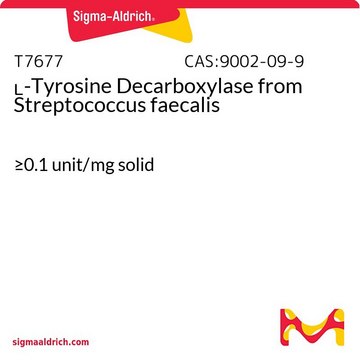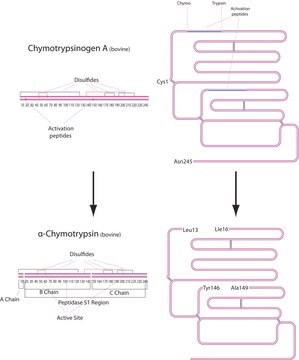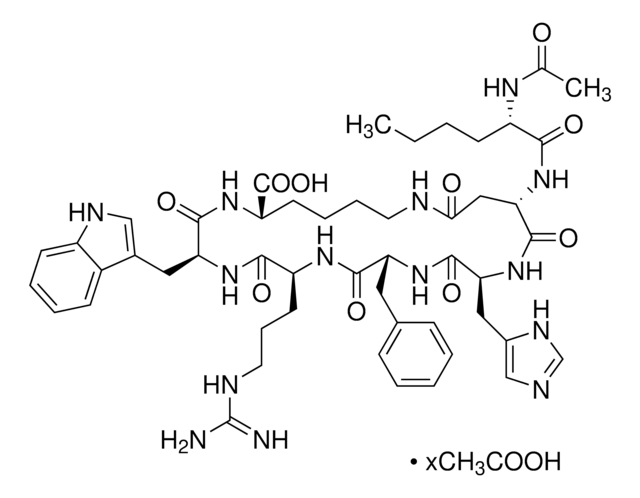推荐产品
應用
L-Tyrosine decarboxylase apoenzyme from Streptococcus faecalis has been used:
- in a study to purify and characterize tyrosine decarboxylase and aromatic-L-amino-acid decarboxylase
- in a study to investigate the stereospecificity of sodium borohydride reduction of tyrosine decarboxylase
- in protein synthesis studies
生化/生理作用
L-Tyrosine Decarboxylase Apoenzyme is an aromatic L-amino acid decarboxylase. The enzyme activity of tyrosine decarboxylase (TDC) is dependent on the cofactor pyridoxal 5-phosphate (PLP). It catalyzes the decarboxylation of dihydroxyphenylalanine.
其他說明
Dried cells grown on vitamin B6-deficient medium.
單位定義
One unit will liberate 1.0 μmole of CO2 from L-tyrosine per min at pH 5.5 at 37 °C.
儲存類別代碼
11 - Combustible Solids
水污染物質分類(WGK)
WGK 3
閃點(°F)
Not applicable
閃點(°C)
Not applicable
個人防護裝備
Eyeshields, Gloves, type N95 (US)
Gunsalus, I.C., and Smith, R.A.
Methods in Enzymology, 3, 963-963 (1957)
Haixia Zhu et al.
Scientific reports, 6, 27779-27779 (2016-06-14)
Tyrosine decarboxylase (TDC) is a pyridoxal 5-phosphate (PLP)-dependent enzyme and is mainly responsible for the synthesis of tyramine, an important biogenic amine. In this study, the crystal structures of the apo and holo forms of Lactobacillus brevis TDC (LbTDC) were
E E Smissman et al.
Journal of medicinal chemistry, 19(1), 161-163 (1976-01-01)
2,2-Dimethyl-4-imidazolidinone derivatives of the alpha-amino acids DL-phenylglycine (1), DL-phenylalanine (2), L-tyrosine (3), L-histidine (4), and L-tryptophan (5) were prepared in order to assess their specificity in inhibiting amino acid decarboxylases. Treatment of th alpha-aminonitriles with acetone in the presence of
J C Vederas et al.
The Journal of biological chemistry, 254(12), 5053-5057 (1979-06-25)
Sodium boro[3H]hydride reduction of tyrosine decarboxylase from Streptococcus faecalis followed by complete hydrolysis of the enzyme produces epsilon-[3H]pyridoxyllysine. Degradation of this material to [4'-3H]pyridoxamine and stereochemical analysis with apoaspartate aminotransferase shows that the re side at C-4' of the cofactor
T Miura et al.
International journal of cancer, 46(5), 931-934 (1990-11-15)
Phenolic melanin precursors can be utilized for the development of anti-melanoma agents. The sulphur homologue of tyrosine, 4-S-cysteinylphenol (CP) and its decarboxylation product, 4-S-cysteaminylphenol (CAP) were shown to be substrates of melanoma tyrosinase, forming melanin-like pigment. Both, but in particular
我们的科学家团队拥有各种研究领域经验,包括生命科学、材料科学、化学合成、色谱、分析及许多其他领域.
联系技术服务部门








